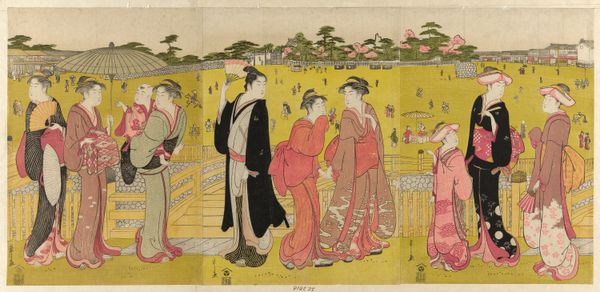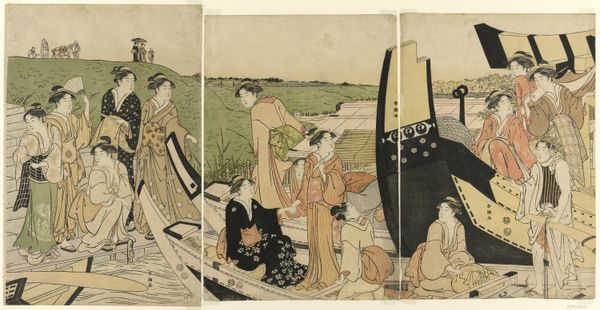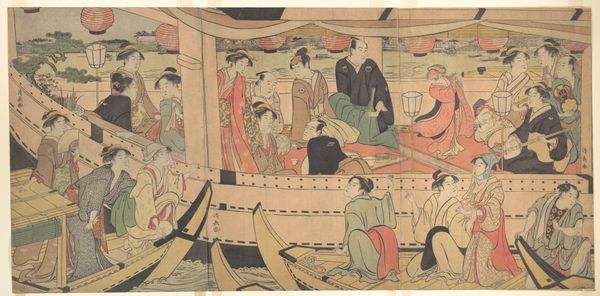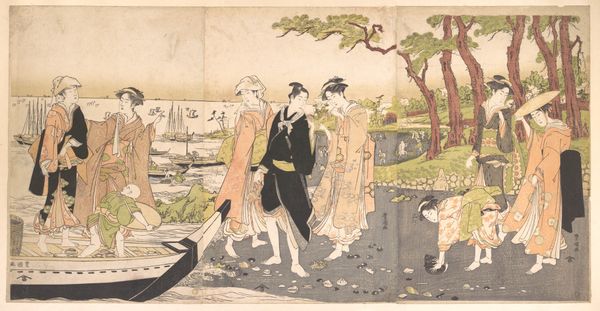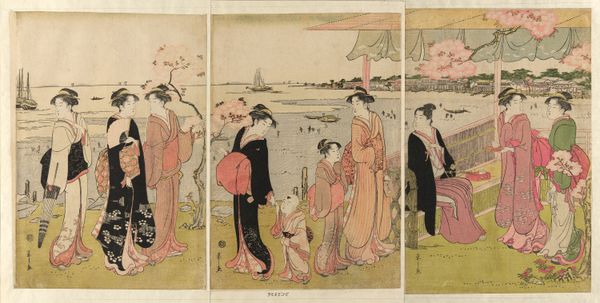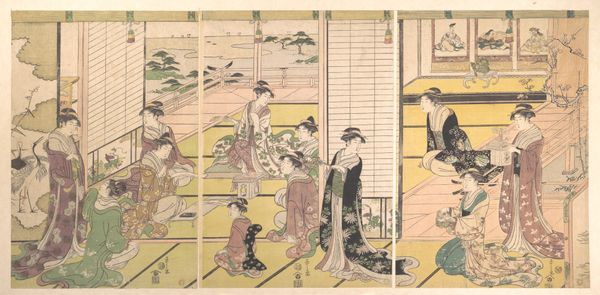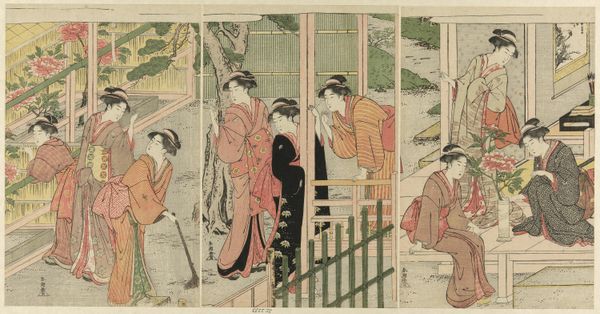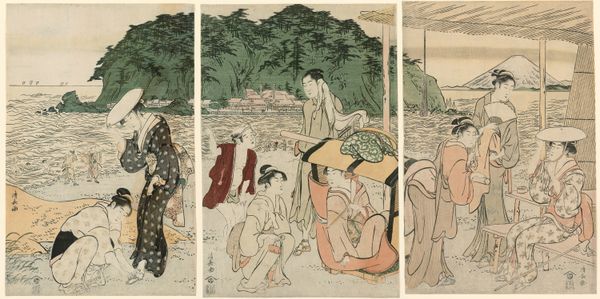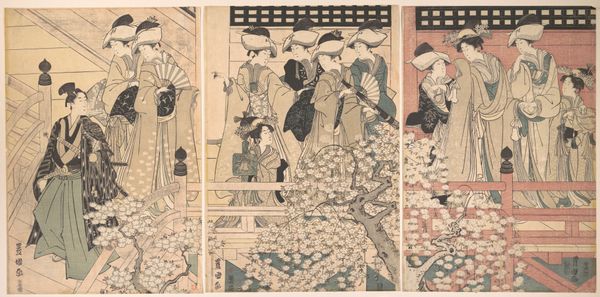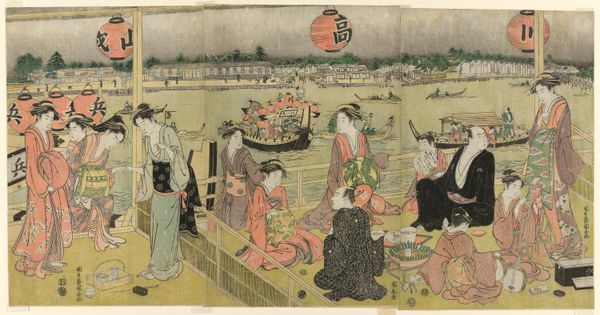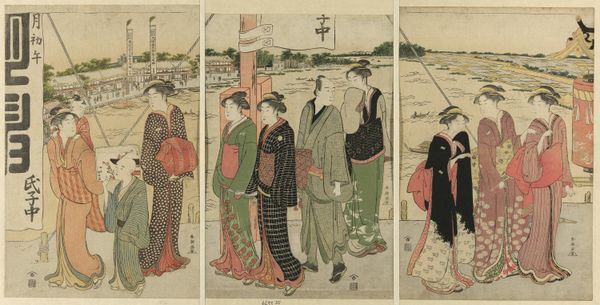
print, watercolor, woodblock-print
# print
#
asian-art
#
landscape
#
river
#
ukiyo-e
#
watercolor
#
woodblock-print
#
genre-painting
Dimensions: Each sheet: 15 1/4 x 10 1/4 in. (38.7 x 26 cm)
Copyright: Public Domain
Editor: So, this lovely multi-paneled woodblock print is titled *A Boating Party under Azuma Bridge*. It's attributed to Torii Kiyonaga and thought to be from the late 18th century. There’s such a sense of elegant leisure about it. How does this image fit into the broader history of art and visual culture, and how might its display here at the Met shape our understanding of it? Curator: This ukiyo-e print offers a fascinating glimpse into the pleasure culture of Edo-period Japan and specifically highlights how its display reflects power structures. Kiyonaga, you see, was instrumental in popularizing images of beautiful women – *bijin-ga*. Before him, *ukiyo-e* often centered on courtesans or Kabuki actors, appealing to a merchant class eager for diversions. How do these refined, yet everyday scenes affect the viewer today? Editor: I hadn't considered the social context of appealing to merchants and defining leisure; I was more drawn to its aesthetics, its flattened perspective. So by shifting the focus to the boating parties, does it legitimize a specific segment of the population? Curator: Exactly! Kiyonaga elevates scenes of ordinary life. This is key because *ukiyo-e* prints circulated widely, shaping perceptions. He shows them boating beneath the Azuma Bridge which frames them. Think about it: who controls access to representing public spaces, who decides whose enjoyment is visually privileged? The act of placing it on the wall is just as deliberate now. Editor: This definitely casts new light on what I initially perceived as just a charming scene of women out boating. Seeing it as a statement about a rising merchant class gives it greater significance. I hadn’t fully appreciated the power dynamic in representing everyday pleasures like this. Curator: Right, it forces us to acknowledge how representations construct not just "what" we see, but also "who" is seen and deemed worthy. And, of course, which institutions continue to perpetuate those historical biases by exhibiting artworks like this in the 21st century. Editor: Absolutely. This print reveals how art, even seemingly lighthearted, mirrors and reinforces broader societal shifts.
Comments
No comments
Be the first to comment and join the conversation on the ultimate creative platform.
